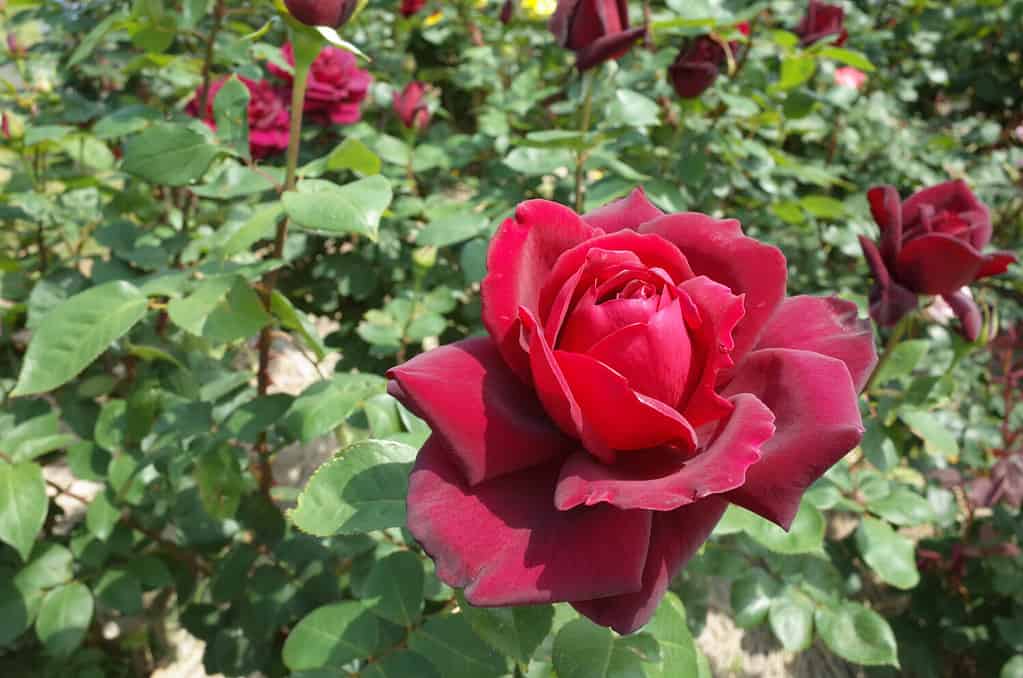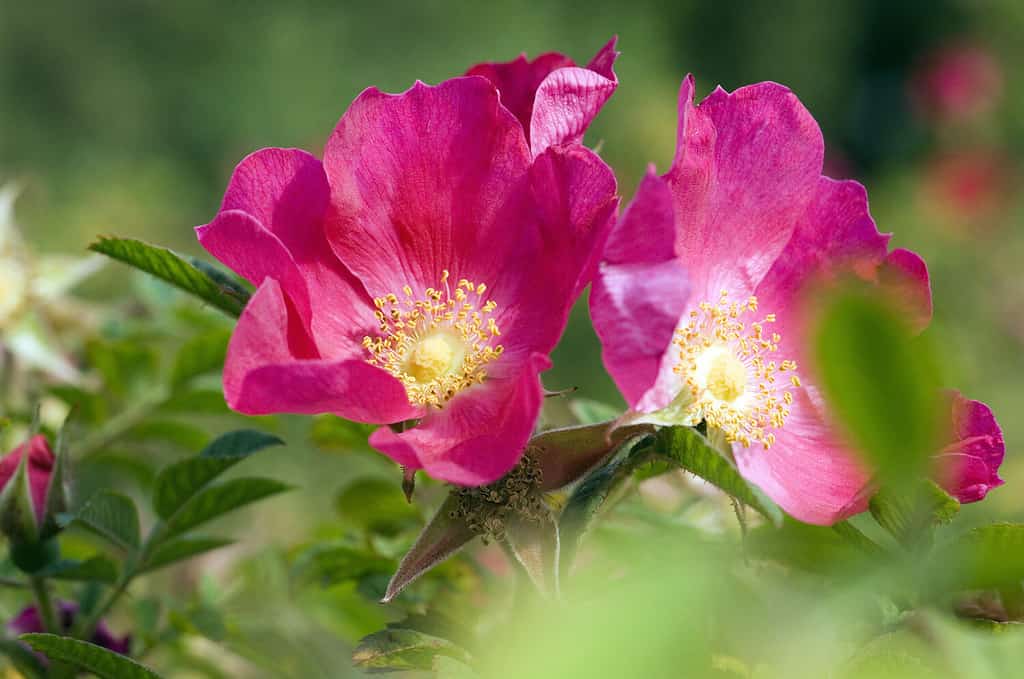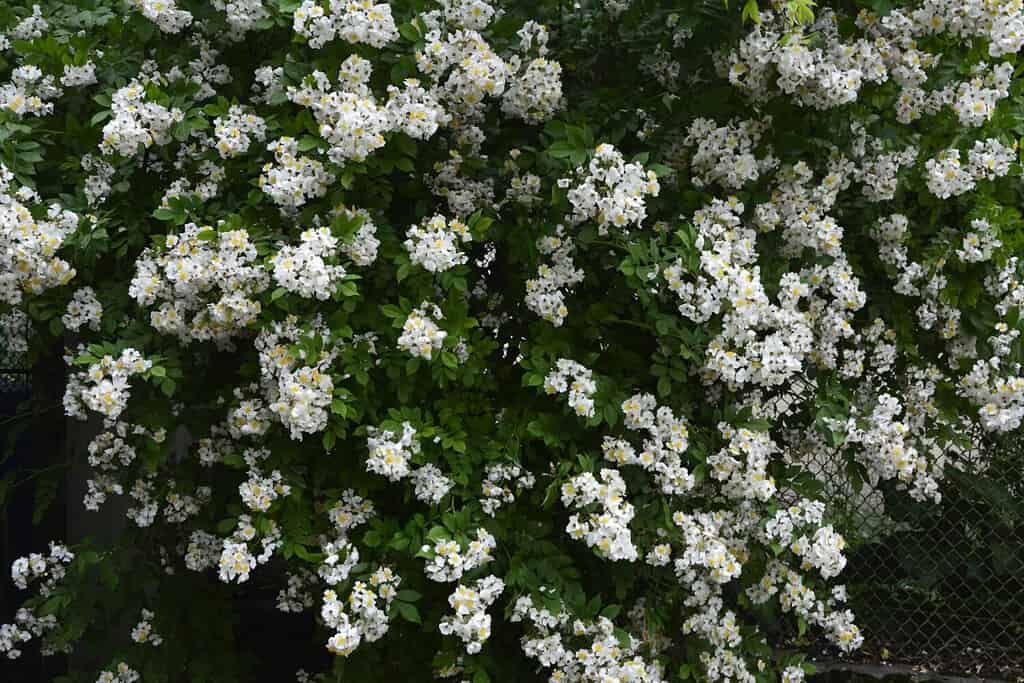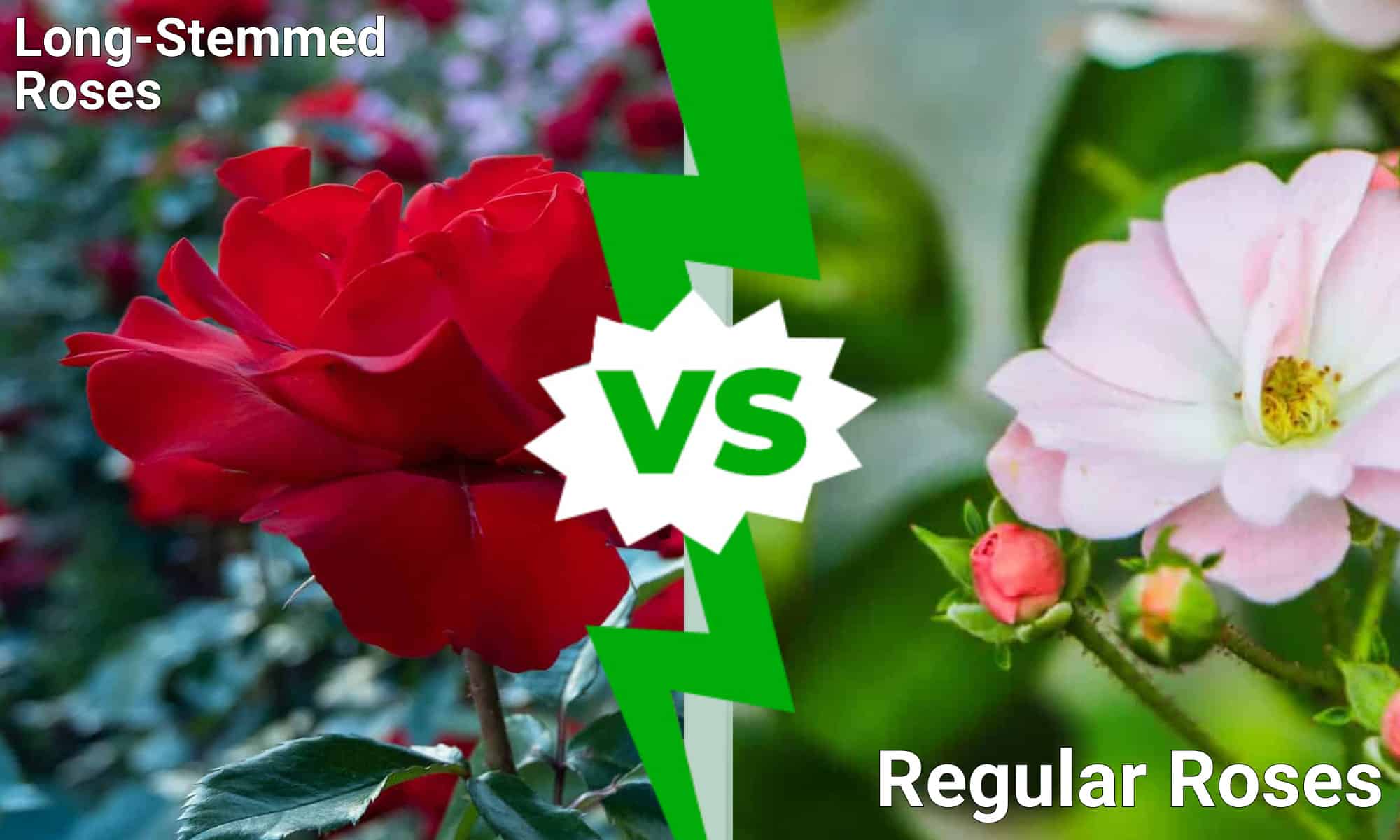Roses are undoubtedly one of the most beloved and iconic flowers, symbolizing love, beauty, and passion. When selecting roses for your garden, you’ll come across various options, including long-stemmed roses and regular roses. In this article, we’ll dig into long-stemmed roses vs. regular roses, exploring the differences between the two and helping you make an informed decision when choosing the perfect blossom.
Comparing Long-Stemmed Roses vs. Regular Roses
| Long-Stemmed Roses | Regular Roses | |
|---|---|---|
| Size | Stems measuring 24 inches or longer | Wide range, with stems measuring under 24 inches |
| Structure | Varies, typically an empty stem with one or several blooms at the top | Varies, with some cultivars having several blooms along the stems (spray flowers, for example) |
| Colors | Various | Various |
| Growth Environment | Meticulous with full sunlight and avid humidity and pest control. | Wide range from wild species with minimal care requirements to cultivated species with robust care requirements. Grow in USDA zones 3-10. |
| Disease and Pest Control | Susceptible to black spots, aphids, and powdery mildew. | Susceptible to black spots, aphids, and powdery mildew. |
| Uses | Typically used in competitive gardening, cut arrangements, and event bouquets. | Wide range of uses, from gardens to floral arrangements. |
What Are Long-Stemmed Roses?
True to their name, long-stemmed roses are known for their elongated stems. This feature makes them particularly popular for creating elegant floral arrangements for weddings or displays.
These rose species are typically cultivated to have stems measuring at least 24 inches or longer. The longer stems also support the single blossoms, allowing them to remain upright for an extended period.
Some well-known cultivars of long-stemmed roses include:
- Hybrid tea roses — such as Rosa ‘Mister Lincoln’ and Rosa ‘Garden Party
- Floribunda Roses — such as Rosa ‘Angel Face’ and Rosa ‘Dusky Maiden
- Grandiflora Roses — such as Rosa ‘Love’ and Rosa ‘Queen Elizabeth’
Many of these cultivars are created in greenhouses for the florist industry.

Long-stemmed
red roses
.
©MasterChefNobu/Shutterstock.com
What Are Regular Roses?
When compared to long-stemmed roses, regular roses could refer to everything else in the species. As the Rosa family is extensive, thousands of cultivars could fall under this category.
Some examples include:
- Spray roses — also known as miniature roses, these small blooms grow in clusters along a low-growing stem. Some popular cultivars include Rosa ‘Jilly Jewel’ and Rosa ‘Gourmet Popcorn.’
- Shrub roses — these rose bushes grow low and wide. This category includes subcategories such as English roses.
- Centifolia Roses — also known as cabbage roses, these blooms have a unique peony-like appearance.
While they may not have the same height and grandeur as long-stemmed roses, regular roses compensate with their abundant clusters of blossoms on each stem, resulting in a fuller and more vibrant look.

Wild roses
in bloom.
©Manfred Ruckszio/Shutterstock.com
Long-Stemmed Roses vs. Regular Roses: Differences
Comparing long-stemmed roses to regular roses can be challenging, considering the vast diversity within the extensive Rosa family, to which both these exquisite blooms belong.
The key differences are in appearance, care requirements, and use.
As mentioned, long-stemmed roses have a longer stem than most Rosa cultivars. These blooms tend to grow upright with a single bloom, though Floribunda roses often have several blooms per stem.
Long-stemmed roses are high maintenance with extensive care needs. These beauties aren’t for the casual gardener. They require constant vigilance in watering, pruning, and monitoring. Many “regular” roses are low-maintenance and truer to their wild roots.
Finally, long-stemmed roses are typically grown with aesthetics and cutting in mind. Regular roses are more attractive to the average gardener.
Growing and Caring for Long-Stemmed Roses
Caring for long-stemmed roses involves meeting their specific needs. It’s important to understand the type of long-stemmed rose (floribunda, grandiflora, etc.) and meet those specific care requirements.
Most long-stemmed rose varieties thrive in USDA zones 5-9. These beauties typically require a minimum of six hours of direct sunlight daily for optimal growth and abundant blooms.
Plant them in well-draining soil enriched with organic matter to promote healthy root development. Regular watering, fertilization, pruning, and disease prevention are essential to maintain their beauty.
While long-stemmed roses look stunning in a garden and as floral arrangements, they aren’t for the faint of heart. Most gardeners who grow these high-maintenance cultivars do so competitively or passionately, with plenty of time to dedicate to the endeavor.

Julia Child long stemmed roses look lovely placed in a vase in your kitchen.
©iStock.com/HedgerowRose
Growing and Caring for Regular Roses
Due to the wide variety within the rose species, different cultivars have varying care requirements.
Most roses thrive in USDA zones 3-8, regardless of their specific type. For example, spray roses and wild rose varieties display greater resilience than longstemmed roses and can tolerate minimal intervention.
For optimal growth, roses prefer full sunlight. While some species can tolerate partial shade, most roses thrive when exposed to at least six hours of direct sunlight daily.
Be cautious not to over-fertilize your roses, as excessive growth can attract aphids. Explore natural pest deterrents to keep aphids away from your roses, such as companion planting with marigolds or introducing ladybugs.
Pruning should be conducted annually, preferably after the growing season has concluded, to maintain the health and shape of the plants.

Pure white multiflora roses growing wildly.
©weha/Shutterstock.com
Thank you for reading! Have some feedback for us? Contact the AZ Animals editorial team.








